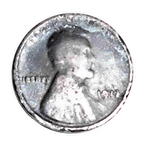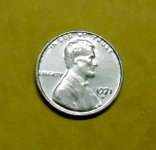JunkLover
Jr. Member
I asked my boyfriend if I could root around in his change jar for old coins and I found a few. Some wheaties from the '50s, nothing glorious there. But one I did find that I liked was a wheat penny from the 1910s. I wish I could specify a date, but the coin itself is in bad shape. I think the damage is from being circulated and from a roof leak from a couple years ago that soaked the jar and a few other items.
That last number on the mint year is what I can't quite make out. I think it's either a 2 or a 9, no mint mark. My camera is pretty crappy, but I did my best to enhance the contract and darken the year for easier viewing. The actual coin is more of a dark grey than copper right now. I tried cleaning it off with peroxide and it did remove some of the stains, but I don't think it'll get much better than this. Can anyone tell what the year is on that penny? Just disappointed that this is currently the oldest coin in my collection and it's in such bad shape.

Also, I found the 1971 penny in my own change jar. All the details look a little fuzzy and thick, especially on the tails side, so I'm pretty sure this penny was coated in some other metal and wasn't originally made this way. But I've never seen a coated penny like this anywhere else. It's weird. Anyone ever see one of these before?

That last number on the mint year is what I can't quite make out. I think it's either a 2 or a 9, no mint mark. My camera is pretty crappy, but I did my best to enhance the contract and darken the year for easier viewing. The actual coin is more of a dark grey than copper right now. I tried cleaning it off with peroxide and it did remove some of the stains, but I don't think it'll get much better than this. Can anyone tell what the year is on that penny? Just disappointed that this is currently the oldest coin in my collection and it's in such bad shape.

Also, I found the 1971 penny in my own change jar. All the details look a little fuzzy and thick, especially on the tails side, so I'm pretty sure this penny was coated in some other metal and wasn't originally made this way. But I've never seen a coated penny like this anywhere else. It's weird. Anyone ever see one of these before?



 (that was awful)
(that was awful)